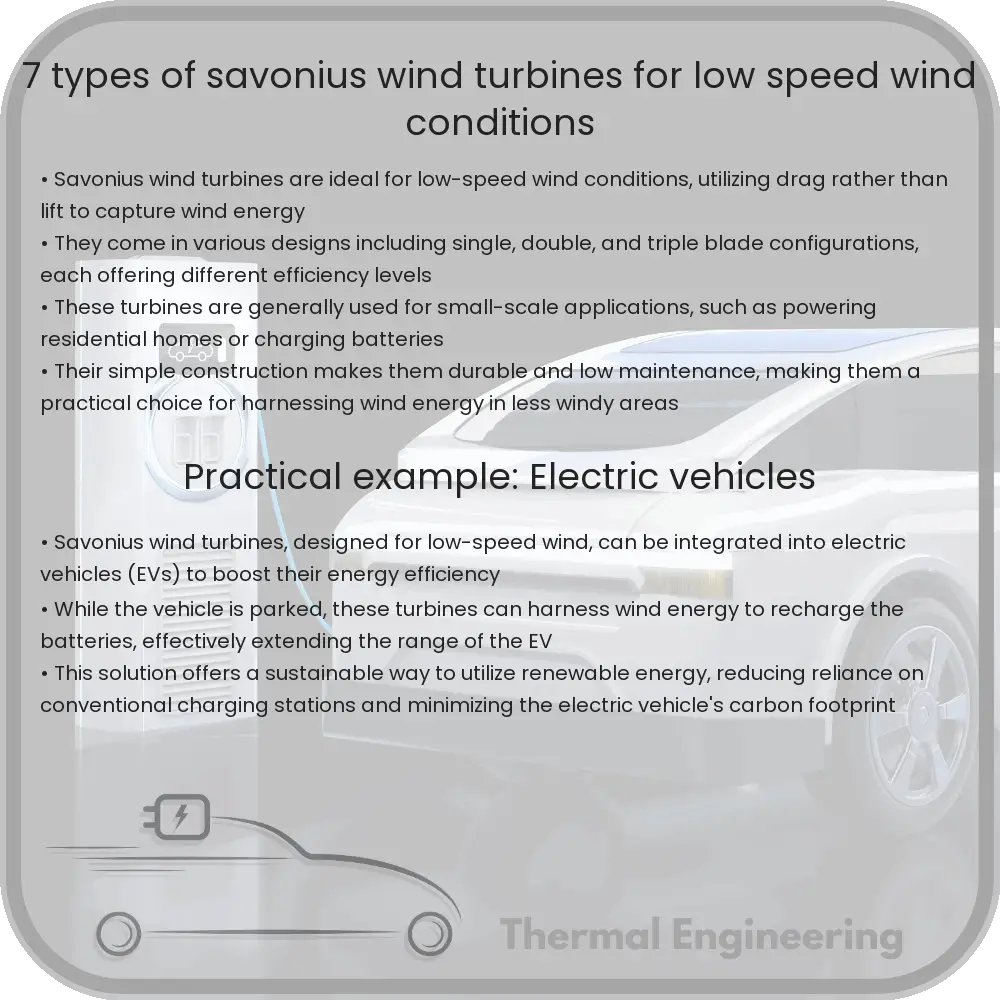Learn about Savonius wind turbines, their unique designs, and applications for efficient low-speed wind energy conversion.

Introduction
Wind energy is a crucial component of the global renewable energy strategy. One effective design suitable for low-speed wind conditions is the Savonius wind turbine. Unlike traditional turbines, the Savonius model uses drag, not lift, to capture wind energy, making it ideal for areas with low wind speeds. This article explores seven types of Savonius wind turbines and their unique applications.
1. Traditional Savonius Wind Turbine
The traditional Savonius turbine features a simple construction with two or three scoops that are bent in a semi-circular shape. These scoops rotate around a vertical axis, making them omni-directional, which means they do not need to face the wind to be effective. This design is particularly favored for its ease of construction and low maintenance requirements.
2. Mini Savonius Wind Turbine
Mini Savonius turbines are scaled-down versions of the traditional design. They are commonly used in residential areas and for educational purposes. Despite their small size, they are quite efficient at converting the energy from low-speed winds into electricity, making them an excellent choice for urban environments where wind speeds are typically lower.
3. Helical Savonius Wind Turbine
The helical or twisted Savonius turbine features blades that spiral along the axis. This design reduces the pulsation in the rotational speed during operation, leading to a smoother torque output and increased efficiency. It is particularly useful in irregular wind conditions and is aesthetically pleasing, which adds to its popularity in urban settings.
4. Multiple-Stage Savonius Wind Turbine
Multiple-stage Savonius turbines stack several Savonius rotors vertically to increase the capture area and hence the power output. This configuration can be customized according to the height restrictions and wind conditions of a particular site. It’s especially effective in locations where ground space is limited but vertical space is plentiful.
5. Roof Mounted Savonius Wind Turbine
Roof mounted Savonius turbines are an innovative solution for integrating wind energy systems into buildings without requiring additional land space. These turbines can be installed on the roofs of commercial or residential buildings, where they utilize the wind flow altered by the building structure to generate energy.
6. VAWT with Deflectors
This variation of the Savonius turbine includes strategically placed deflectors to channel wind more effectively into the turbine. Deflectors enhance the wind speed entering the turbine, thereby increasing its overall efficiency. This adaptation is particularly beneficial in environments where wind directions are highly variable.
7. Hybrid Savonius and Darrieus Wind Turbine
Combining the features of both Savonius and Darrieus turbines, the hybrid model aims to maximize energy capture from low-speed winds. The Savonius components provide high torque at low wind speeds, while the Darrieus sections contribute to higher rotational speeds. This combination allows for better overall performance across varying wind conditions.
Conclusion
Savonius wind turbines, with their robust design and suitability for low-speed wind conditions, offer a versatile solution for harnessing wind energy. By understanding the different types of Savonius turbines available, stakeholders can select the most appropriate design to meet their specific energy production needs and environmental conditions. As advancements in technology continue to evolve, the efficiency and applications of Savonius turbines are expected to expand, contributing more significantly to renewable energy portfolios around the world.